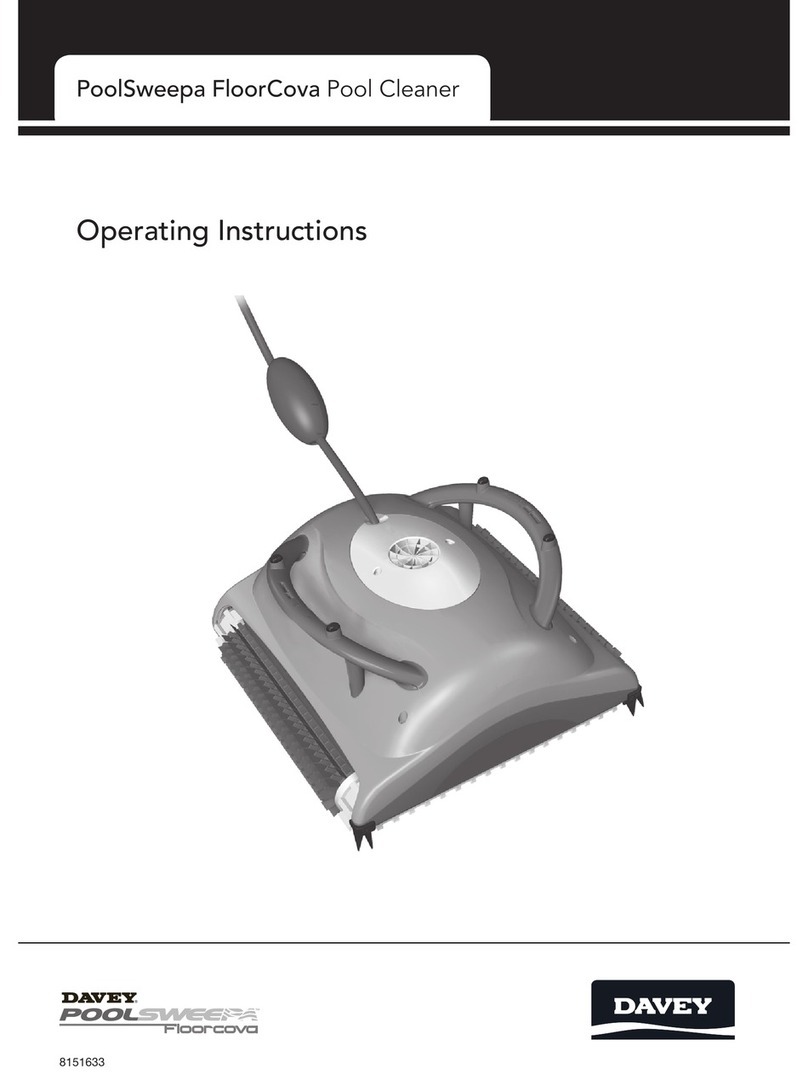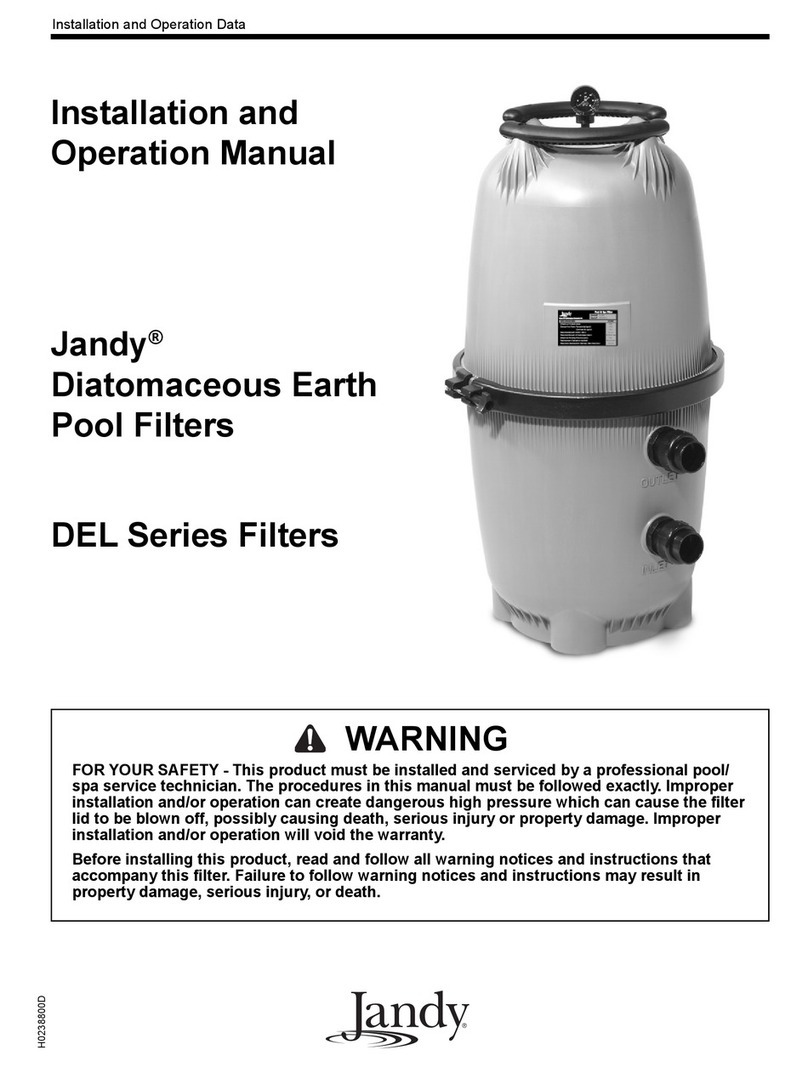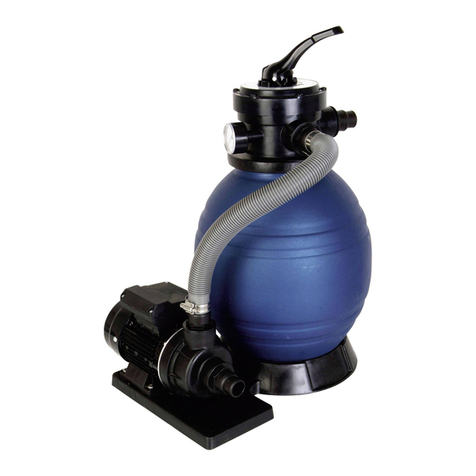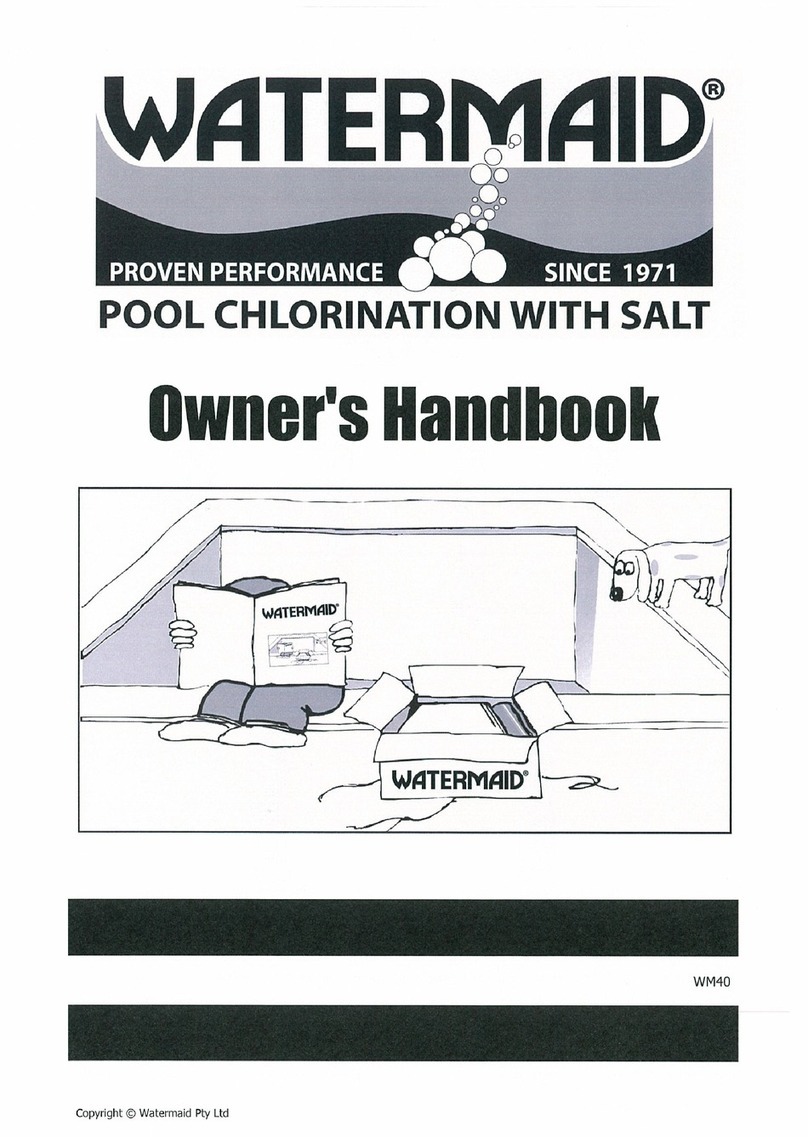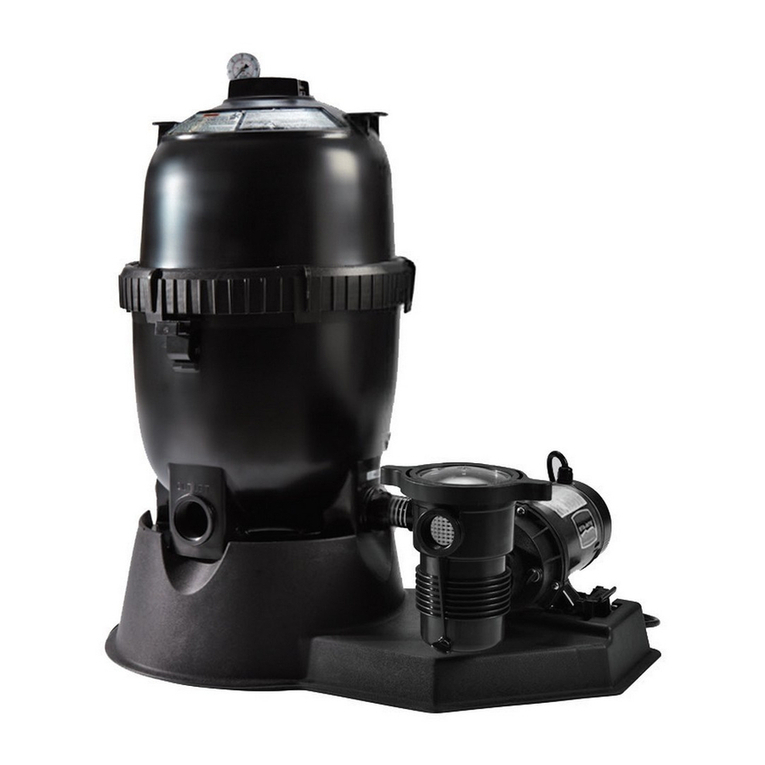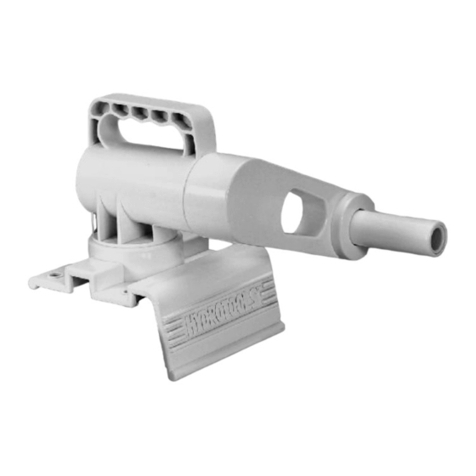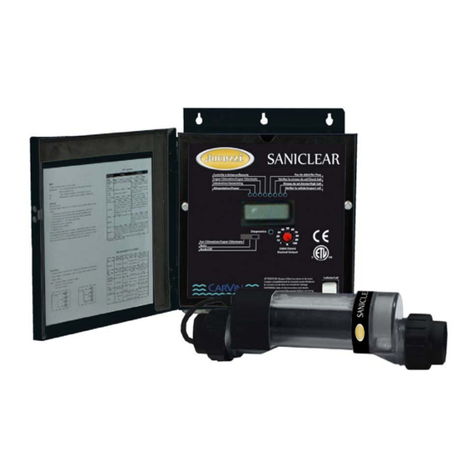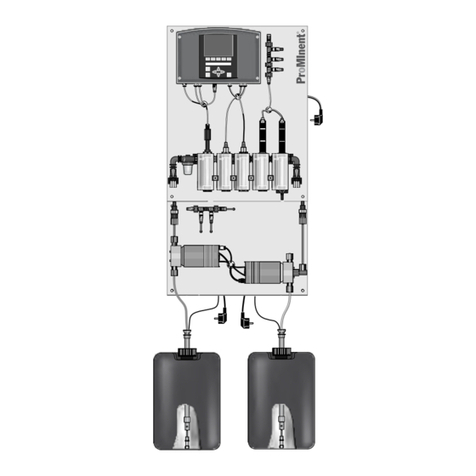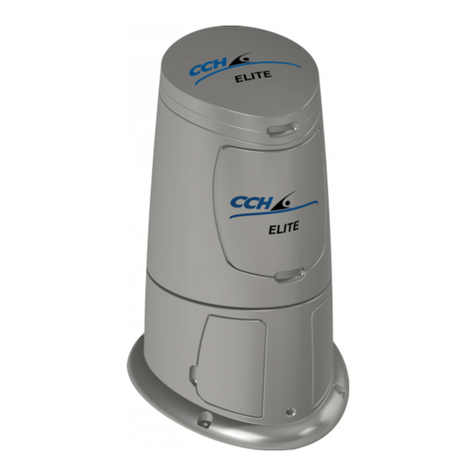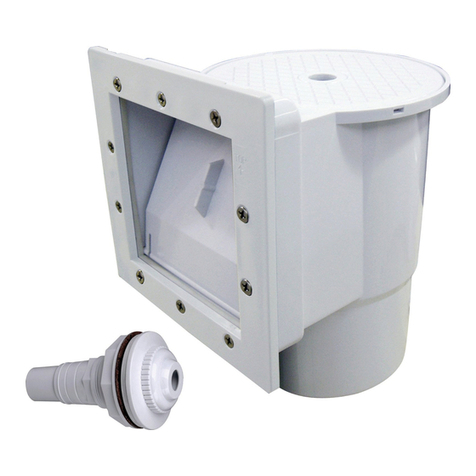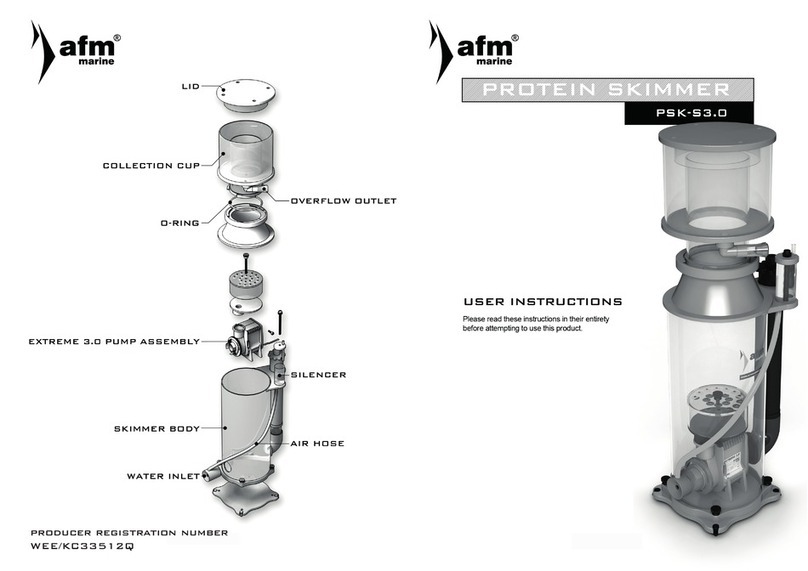
3. VÁLVULA SELECTORA
La válvula selectora del filtro es la
encargada de seleccionar las 6 diferentes
funciones del filtro: filtración (filter), lavado
(backwash),recirculación (RECIRCULATE),
vaciado (waste), enjuague (rinse) y cerrado
(closed). Estas seis funciones están
identificadas encima de la valvula selectora.
Montaje del manometro
Para montar el manometro no es necesario
utilizar ni herramientas ni cinta de teflón ya
que con las juntas y apretando con las manos
ya es suficiente. Fig.2
Para variar la posición de la válvula selectora,
proceder como sigue : Fig.5.
IMPORTANTE: Efectuar siempre los
cambios de posición de la válvula selectora,
con la bomba parada.
• Presionar firmemente el mando superior
de la válvula selectora desencajando del
nervio delantero de su alojamiento (1º),
hasta que nos permita girar sobre sí
mismo.
• Girar suavemente el mando hasta alinear
el nervio delantero con el alojamiento de la
operación deseada (2º).
• Soltar el mando sin brusquedad,
comprobando que el nervio delantero
queda bien encajado en su alojamiento.
4. FILTRACIÓN
El funcionamiento de este filtro se basa en la
capacidad de filtrado de la arena de sílex que
hay en su interior. El agua de la piscina es
impulsada por la bomba del filtro y forzada a
pasar a través de la arena de sílex, quedando
retenidas las impurezas del agua en al arena
que actúa de elemento filtrante. El ambiente,
árboles, polen, insectos y frecuencia de
baños, son entre otros, son los factores
que determinan la suciedad del agua de la
piscina, se deberá limpiar la arena de sílex
del filtro con mayor o menor frecuencia, para
lavar el filtro. (ver apartado 4.2).
Para mantener en buen estado el agua de
la piscina debemos además utilizar los
productos químicos aconsejados por el
fabricante (cloro, antialgas, floculante, etc.).
EN NINGÚN CASO EL PRODUCTO
QUÍMICO DEBE PONERSE EN EL
CESTO O A TRAVÉS DEL FILTRO,
ELLO DETERIORARÍA LOS
MATERIALES DEL APARATO Y
LIMITARÍA SU EFICACIA.
Cebado del filtro
Es imprecindible que el filtro se encuentre
en todo momento correctamente cebado.
Que el filtro no este cebado significa que
en su interior se ha creado una cámara de
aire que provoca una circulación defectuosa
del agua, hecho este que impide el correcto
funcionamiento.
¿Cómo cebar el filtro?
• Con la válvula en posición de filtrado
(filter), aflojar ligeramente la tuerca
de purga que se encuentra junto al
manómetro para que permita salir el aire
acumulado en el interior del filtro.
• Cuando se observe que solo sale agua
(entre 10 y 20 segundos), cerrar de nuevo
la tuerca de purga.
NO MANIPULAR EN NINGÚN CASO
LA VÁLVULA CON EL MOTOR EN
MARCHA.
4.1 Filtración
• La filtración, es sólo una parte del
trabajo a realizar para mantener limpia
una piscina y además inseparable del
tratamiento químico, ya que la una sin
la otra por sí solas no consiguen el fin
buscado. Con esto queremos indicar que
sólo con el filtro no se conseguirá nada si
no va acompañado de un buen tratamiento
químico.
• Con la bomba apagada, mover la maneta
de la válvula selectora a la posición de
FILTRADO
• Poner en marcha la bomba
• Durante el funcionamiento es conveniente
observar periódicamente el manómetro, el
cual nos indica el grado de saturación del
filtro
Previo a la primera vez que se usa el filtro
se debe realizar un lavado de la arena.
(Apartado 4.2)
¿Cuándo debemos hacer un lavado del
filtro?
Durante el funcionamiento es conveniente
observar periódicamente el manómetro,
el cual nos indica el grado de saturación
del filtro. Cuando la presión llege a la zona
amarilla o roja, se realizara un lavado. Si
usted observa una disminución de caudal en
el retorno compruebe la presión del filtro.
4.2 Lavado
Con el proceso de autolavado procedemos a
limpiar la arena de sílex del interior del filtro,
para ello se invierte el sentido de circulación
del agua mediante la válvula selectora.
Para el lavado de la arena deberemos
proceder como sigue:
• Desconectar la bomba de la toma de
corriente. No mover nunca la válvula
selectora con el motor en marcha.

